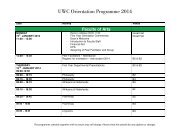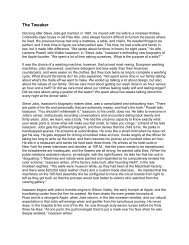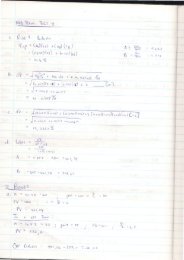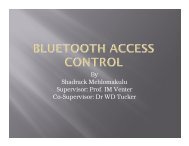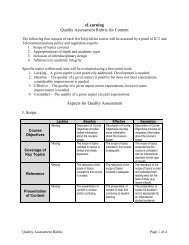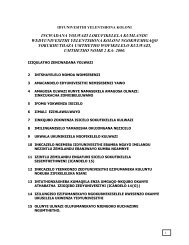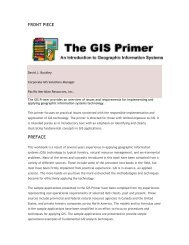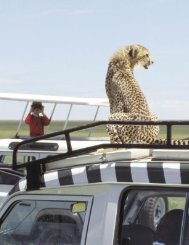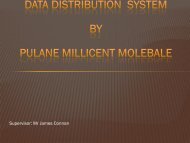Ecosystem Guidelines for Environmental Assessment
Ecosystem Guidelines for Environmental Assessment
Ecosystem Guidelines for Environmental Assessment
Create successful ePaper yourself
Turn your PDF publications into a flip-book with our unique Google optimized e-Paper software.
APPENDIX 2<br />
RECOMMENDED TERMS OF REFERENCE FOR<br />
THE CONSIDERATION OF BIODIVERSITY<br />
IN ENVIRONMENTAL ASSESSMENT AND DECISION-MAKING<br />
Botanical Society of SA Conservation Unit, Private Bag X10, Claremont, 7735<br />
Tel: 27-21-799-8824 Fax: 27-21-761-5983<br />
Inquiries: Paisley@botanicalsociety.org.za<br />
1. Provide a general overview of the affected area in terms of connectivity, corridors, and ecological<br />
viability of the affected area.<br />
2. In terms of biodiversity pattern, identify or describe:<br />
2.1 Community and ecosystem level<br />
a. The main vegetation type 1 , its aerial extent and interaction with neighbouring types, soils<br />
or topography.<br />
b. The types of plant communities that occur in the vicinity of the site.<br />
c. Threatened or vulnerable ecosystems (cf. new SA vegetation map/National Spatial<br />
Biodiversity <strong>Assessment</strong> 2 , conservation plans http://cpu.uwc.ac.za, WCNCB State of<br />
Biodiversity Report.http://www.capenature.org.za).<br />
d. The types of animal communities (fish, invertebrates, avian, mammals, reptiles, etc).<br />
2.2 Species level<br />
a. Red Data Book species (give location, if possible using GPS).<br />
b. The viability of and estimated population size of the RDB species that are present (include<br />
the degree of confidence in prediction based on availablitiy of in<strong>for</strong>mation and specialist<br />
knowledge, i.e. High=70-100% confident, Medium 40-70% confident, low 0-40% confident).<br />
c. The likelihood of other RDB species, or species of conservation concern, occurring in the<br />
vicinity (include degree of confidence).<br />
2.3 Other pattern issues<br />
a. Any significant landscape features or rare or important vegetation/faunal associations<br />
such as seasonal wetlands, alluvium, seeps, quartz patches or salt marshes in the vicinity.<br />
b. The extent of alien plant cover of the site, and whether the infestation is the result of prior<br />
soil disturbance such as ploughing or quarrying (alien cover resulting from disturbance is<br />
generally more difficult to restore than infestation of undisturbed sites).<br />
c. The condition of the site in terms of current or previous land uses.<br />
92 : APPENDIX 2<br />
1. Mucina L, Ruther<strong>for</strong>d MC and Powrie LW (eds)(2004) Vegetation map of South Africa, Lesotho and Swaziland:<br />
Shapefiles of basic "mapping units". Beta version 4.0, February 2004, National Botanical Institute, Cape Town.<br />
Obtainable from SA National Biodiversity Institute, Ph (021) 799 8800 or parenzee@sanbi.org. Conditions apply.<br />
2. Go to "Incoming", go to "NSBA Vol 1 Terrestrial Component Oct 04 Appendix A&B.pdf"



